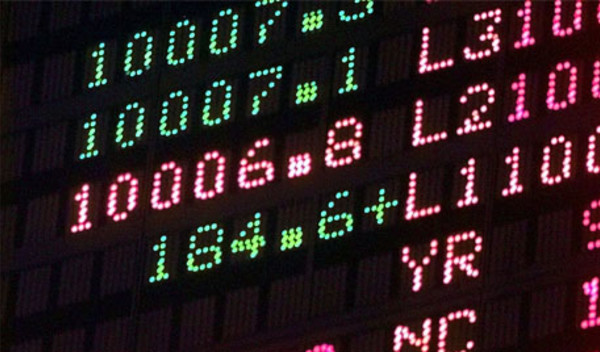

The old saying goes something like this: “Don’t worry about protecting your foreign currency exposure: in the long term it’s all swings and roundabouts.” But after a six-month period in which the pound has been devalued against at least one mainstream foreign currency by more than 15 per cent, the ups and downs in exchange rates seem less akin to a children’s playground and more like Thorpe Park’s Nemesis Inferno. So is there any truth in this investment folklore or should long-term pension investors take exchange rate risk more seriously?
Trading fallacies
Foreign exchange (FX) is a market where many investors perceive trading gains are to be made because, unlike other markets – such as equities and bonds – it is full of unsophisticated buyers and sellers, people like you and me swapping our currencies to go on holiday, taking whatever rate we are given. This year, however, is a timely reminder that homespun observations such as this are frequently wide of the mark. The truth is that the FX markets are dominated by large corporates hedging their FX exposure and institutions speculating on future currency movements.
A favourite game played by the institutions is called the ‘carry trade’. The rules are simple. You borrow money in a country with a low interest rate – such as Japan, where interest rates have recently become negative. You take your yen, convert them to a currency which carries a higher interest rate (not many options currently, but at 0.5 per cent interest even the US dollar would work). You put your dollars in a bank or buy riskier dollar assets, earn your interest or returns and reconvert to yen to pay back your loan at the end of the term (say, one year later.)
The dollar interest rate you earned would have more than covered the yen interest you paid on the loan. According to trading logic, the currency of the higher-interest-rate country should also rise in value because it is more attractive to own dollars than yen. That will leave you with your interest covered, plus gains both in the FX rate and on the investment when you come to convert back to yen to pay off your loan.
The theory says no
This may sound sensible, but the plan is remarkably at odds with economic theory. The theory states that a low-interest-rate country should see its currency rise against a high-interest-rate country – not the other way around. Why? Imagine the scenario where the UK has interest rates of 10 per cent, the US has rates of zero, and the exchange rate is £1:$1.50. If you keep your pounds on deposit for a year, they will grow to £1.10. If you exchange your pounds for $1.50 at the beginning of the year and keep them on deposit, you will still have $1.50 at the end because US rates are zero. A year later, then, your £1.10 will be equivalent to $1.50, implying a new foreign exchange rate of £1:$1.36 – the pound buys fewer dollars and so is said to have devalued.
High inflation
Another way of looking at this is to accept that a high interest rate implies high inflation (as is the case today in India and Brazil, for instance). If the UK is experiencing high inflation then one pound will be worth less in the future than it is today; in other words the pound is losing value.
According to this theory, interest rates are simply a function of inflation – a country with higher inflation has higher interest rates, which are offset by a devaluing currency. And although this sounds deeply theoretical, it is exactly how FX rates are priced in the forwards market. If you want to buy euros now to fund your holiday in a year’s time (or, more likely, a UK company expecting a big euro bill next year) you can lock in the rate in the forwards market. That forward rate will be priced almost exactly in this way – based on the difference in interest rates.
High volatility
So, on the one hand, you have traders buying high-interest-rate currencies with low-interest-rate loans – and, on the other hand, you have economic theory saying this shouldn’t work. The fact that vast amounts of money are being carried on a trading plan that is predicted to fail by economic theory is one of the reasons FX can be highly volatile. This year the pound has devalued against the yen by an astonishing 12 per cent to the middle of May. It wasn’t doing much better against the euro (7 per cent down) or dollar (3 per cent down.)
Such an extreme movement in exchange rates has been put down to widespread unwinding of carry trades at the beginning of the year. In short, as the yen started to gain in value at the end of last year, carry traders began to panic. They unwound their trades in droves – and that meant selling their foreign assets and buying yen. This, of course, pushed up the price of the yen even more and the currency snowballed.
Sterling’s devaluation
The pound’s devaluation against almost everything has been explained in part by fears about Brexit. But the most likely reason has been a change in interest rate expectations. The UK is now expected to keep its base rates lower for much longer than had been previously thought. By comparison, the US has already started to put rates up.
That has made US dollars more attractive and sterling less attractive to international investors: dollars have gone up, sterling has gone down. In this example, at least, the carry trade has trumped economic theory; investors have bought the higher interest rate and sold the lower interest rate.
To hedge or not to hedge?
So where does this complex maze of economic theory, trading practice and interest rate policy leave the humble pension fund portfolio? Investors and their advisers may be forgiven for throwing their hands up in bewilderment. Unfortunately, the client has to make a decision. The simplest question is whether to hedge currency or not to hedge currency as a matter of investment policy. Advocates of the swings and roundabouts argument will say that although the pound may go up and down, over the long time frame most retirement portfolios work to, it shouldn’t matter in the end.
Economic theory would support this case, because it states that FX is just a function of interest rates and inflation, and that no investment gains are to be made in the long run. The long run, however, is made up of many small short runs, and FX is a real risk as carry traders would attest. A retirement portfolio designed to buy an annuity in sterling – or pay out income in sterling through drawdown – would expect to keep track of UK interest rates and inflation (hopefully beating them) by investing in a diversified portfolio of sterling assets.
As soon as non-sterling assets are introduced, the investor risks an additional gain or loss that is crystallised on the day the assets are sold to deliver the sterling income the client needs. And of course, clients who plan to retire overseas in effect have liabilities – ie future retirement costs – in the currency of the country they will be living in, not in sterling.
Roller coaster ride
The long run has to end at some point – and that may not be long enough for the roundabout to have come back round in time. Hedging a currency is not free, and is not always practical. But pension fund clients should not dismiss it out of hand. The FX market is increasingly less like a see-saw, more like the Nemesis Inferno.
Bob Campion is head of institutional business at Charles Stanley Pan Asset



